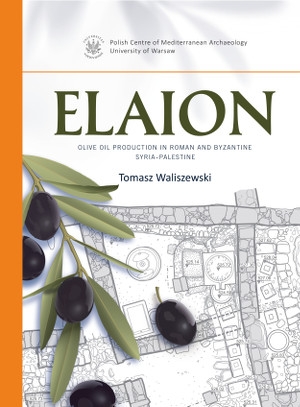
Tomasz Waliszewski, Elaion. Olive Oil Production in Roman and Byzantine Syria–Palestine, [=PAM Monographs 6], Warsaw: PCMA, University of Warsaw Press, 2014
ISBN 978-83-235-1345-2
Pages: 632
Why oleoculture?
Oleoculture was always an important part of ancient agriculture, which was the mainstay of the ancient economy and the writing on the subject, both ancient and modern, is immense. The present study centers upon the place of the olive in the agricultural regimes and economies of Roman and Byzantine Syria–Palestine, exploring them in environmental, technological, social and, when possible, economic contexts.
The book opens with a synthetic presentation of oil production in Roman and Byzantine Syria–Palestine, based for the most part on data, which is gathered and presented in the second part as well as in an online resource, comprising new evidence from Syria, Lebanon and Jordan, as well as an overview of previously available data from Palestine, supplemented with information on the latest discoveries. The author explores the regional origins of olive cultivation and its wanderings across time and space, discussing typology and chronology of oil facilities and their rural and urban contexts, as well as the economics of production and logistics of olive oil distribution.
About the Author
Tomasz Waliszewski is a researcher and a lecturer at the Institute of Archaeology of the University of Warsaw and Director of the Polish Centre of Mediterranean Archaeology. He received his PhD in Near Eastern archaeology from the University of Warsaw and is an active field archaeologist, who has worked in Egypt, Jordan, Syria and Lebanon, including already seventeen seasons of his own projects at the sites of Chhîm and Jiyeh (ancient Porphyreon) in Lebanon. He has also co-directed conservation and archaeological projects at the Byzantine basilica at Tell Amarna in Syria and the medieval church at Kaftun in Lebanon. His main fields of research include architecture and decoration of churches in the Byzantine and medieval Near East and domestic architecture with special emphasis on rural settlements and their social and economic aspects including farming technology. He was a Dumbarton Oaks Fellow in Byzantine Studies (Washington DC, Trustees for Harvard University) and Fulbright Fellow at Brown University and is currently an associated member of UMR 8167 Orient et Méditerranée (CNRS-Université Paris 1 Panthéon Sorbonne).

